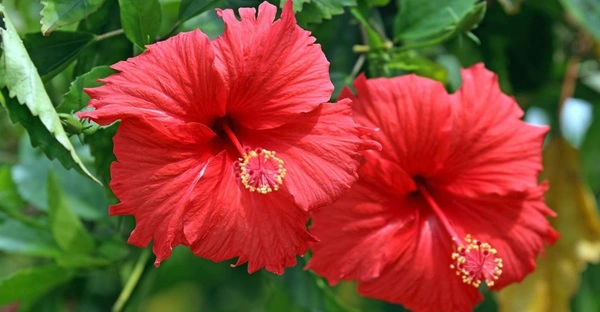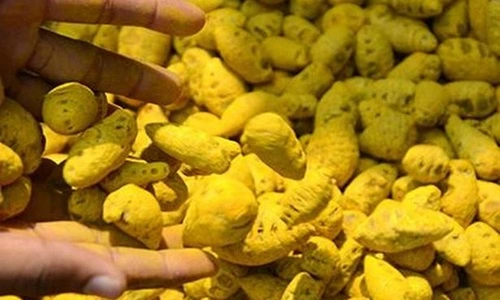Hibiscus, known as “Gudhal” in India, is a versatile flowering plant revered for its medicinal, ornamental, and cultural value. Its vibrant flowers are widely used in religious rituals, Ayurveda, cosmetics, and garden landscaping. Hibiscus plants are low-maintenance and thrive in India’s tropical and subtropical climates, making them popular in home gardens, public parks, and commercial nurseries.
Hibiscus flowers come in various shapes, sizes, and colors, ranging from bright reds and pinks to yellows, oranges, and purples. Different varieties are grown for specific purposes, including ornamental beauty, medicinal uses, and commercial applications like tea and cosmetics.
This article highlights more than 10 top hibiscus varieties in India, their characteristics, and growing conditions to help gardeners, farmers, and enthusiasts make informed choices.

1. Hibiscus Rosa-Sinensis (Chinese Hibiscus)
Hibiscus Rosa-Sinensis, also known as China Rose, is one of the most popular hibiscus varieties in India.
- Flower Color: Bright red (most common), also available in pink, yellow, and white
- Size: Medium to large flowers (4–6 inches in diameter)
- Growth Habit: Evergreen shrub
- Regions: Thrives in tropical and subtropical climates across India
- Characteristics:
- Ideal for ornamental and landscaping purposes
- Used in Ayurveda for hair care and treating scalp issues
- Blooms year-round in warm climates
- Uses: Ornamental gardens, hair oils, herbal teas, and religious offerings
2. Hibiscus Sabdariffa (Roselle)
Hibiscus Sabdariffa, commonly known as Roselle or Red Sorrel, is valued for its medicinal and culinary uses.
- Flower Color: Red, pink, or white with a dark center
- Size: Medium-sized flowers
- Growth Habit: Annual or perennial shrub
- Regions: Maharashtra, Tamil Nadu, Andhra Pradesh, and West Bengal
- Characteristics:
- Calyx (the red part) is used to make herbal tea, jams, and juices
- Rich in Vitamin C, antioxidants, and minerals
- Promotes cardiovascular health and reduces inflammation
- Uses: Roselle tea, health supplements, food coloring, and natural remedies
3. Hibiscus Mutabilis (Confederate Rose)
Hibiscus Mutabilis, also called the Confederate Rose, is admired for its unique color-changing flowers.
- Flower Color: Changes from white to pink to red in a single day
- Size: Large flowers (6–8 inches)
- Growth Habit: Deciduous shrub or small tree
- Regions: Tamil Nadu, Karnataka, and Kerala
- Characteristics:
- Fast-growing and tolerant to hot climates
- Unique ornamental appeal due to color-changing blooms
- Uses: Landscaping, ornamental gardens
4. Hibiscus Moscheutos (Swamp Rose Mallow)
Hibiscus Moscheutos is a water-loving variety with stunning large flowers and vibrant colors.
- Flower Color: Pink, red, white, or bicolor
- Size: Very large flowers (8–10 inches in diameter)
- Growth Habit: Perennial, thrives in moist areas
- Regions: Kerala, Tamil Nadu, coastal regions
- Characteristics:
- Thrives near ponds and wetlands
- Showy flowers attract pollinators like bees and butterflies
- Uses: Garden landscaping, water gardens
5. Hibiscus Schizopetalus (Fringed Hibiscus)
Hibiscus Schizopetalus, also known as the Japanese Lantern or Fringed Hibiscus, has a distinctive appearance.
- Flower Color: Light pink to red
- Size: Small to medium (2–4 inches)
- Growth Habit: Deciduous shrub
- Regions: Kerala, Maharashtra, Tamil Nadu
- Characteristics:
- Unique fringed and pendulous petals
- Ideal for ornamental purposes due to its exotic appearance
- Uses: Ornamental gardens and balconies
6. Hibiscus Syriacus (Rose of Sharon)
Hibiscus Syriacus is a hardy variety that thrives in diverse climates.
- Flower Color: Blue, white, purple, or pink
- Size: Medium-sized blooms
- Growth Habit: Deciduous shrub
- Regions: North India, Himachal Pradesh, Jammu & Kashmir
- Characteristics:
- Cold-tolerant and drought-resistant
- Long blooming period
- Uses: Hedges, ornamental gardens
7. Yellow Hibiscus
Yellow Hibiscus is an eye-catching variety with vibrant yellow blooms, often used to add color to landscapes.
- Flower Color: Bright yellow with a red center
- Size: Medium to large (4–6 inches)
- Growth Habit: Evergreen shrub
- Regions: Maharashtra, Karnataka, Tamil Nadu
- Characteristics:
- Highly ornamental
- Requires full sunlight for optimal flowering
- Uses: Ornamental gardens, public parks
8. Pink Double Hibiscus
This variety is known for its double-layered pink blooms, adding elegance to gardens.
- Flower Color: Soft pink with layered petals
- Size: Medium to large
- Growth Habit: Bushy shrub
- Regions: Tamil Nadu, Kerala, Karnataka
- Characteristics:
- High aesthetic appeal
- Thrives in tropical climates
- Uses: Landscaping, flower decoration
9. Tropical Hibiscus Hybrids
Tropical Hibiscus Hybrids come in a wide range of bright and vibrant colors.
- Flower Color: Red, orange, yellow, pink, and multicolored
- Size: Medium to large flowers
- Growth Habit: Evergreen shrub
- Regions: Across tropical India
- Characteristics:
- Continuous blooming with proper care
- Highly ornamental and ideal for gardens
- Uses: Ornamental gardens, landscaping
10. Hibiscus Cannabinus (Kenaf)
Hibiscus Cannabinus is grown not just for its flowers but also for its industrial uses.
- Flower Color: Yellow with a dark center
- Size: Medium-sized flowers
- Growth Habit: Annual herbaceous plant
- Regions: Tamil Nadu, Andhra Pradesh, Karnataka
- Characteristics:
- Fiber from its stem is used in paper and textiles
- Thrives in warm climates
- Uses: Fiber production, pulp industry, natural dyes
FAQs
Q1: Which is the most common hibiscus variety in India?
A: The Hibiscus Rosa-Sinensis (Chinese Hibiscus) is the most common variety, used for ornamental and medicinal purposes.
Q2: Which hibiscus variety is best for tea?
A: Hibiscus Sabdariffa (Roselle) is the best variety for making hibiscus tea due to its tangy flavor and high vitamin C content.
Q3: Can hibiscus grow in cold climates?
A: Yes, varieties like Hibiscus Syriacus (Rose of Sharon) can tolerate cold climates and are suitable for North Indian regions.
Q4: What is the significance of hibiscus in Ayurveda?
A: Hibiscus, especially Rosa-Sinensis, is used to treat hair loss, dandruff, and skin conditions in Ayurveda.
Q5: How do I care for hibiscus plants?
A: Provide full sunlight, well-drained soil, regular watering, and periodic pruning for healthy hibiscus plants.
Conclusion
Hibiscus plants, with their diverse varieties, vibrant flowers, and multiple uses, are a true asset to Indian gardens and landscapes. From the commonly grown Hibiscus Rosa-Sinensis to the medicinal Hibiscus Sabdariffa and the exotic Hibiscus Schizopetalus, hibiscus cultivation offers immense opportunities for ornamental and commercial purposes.

